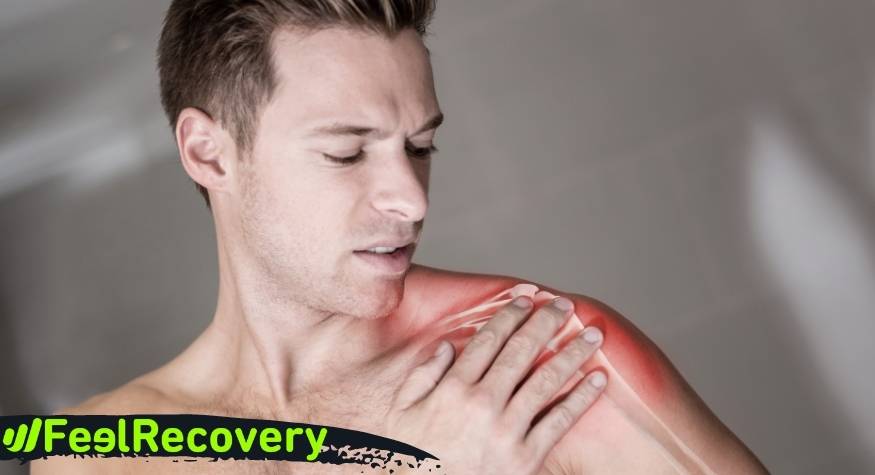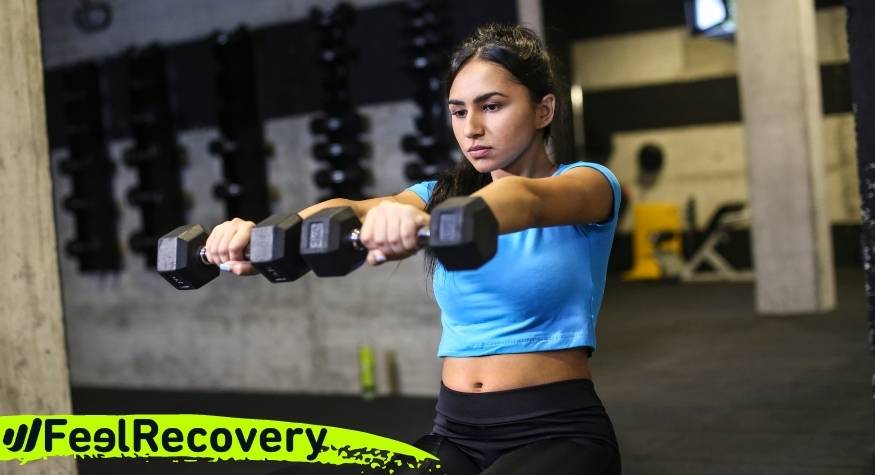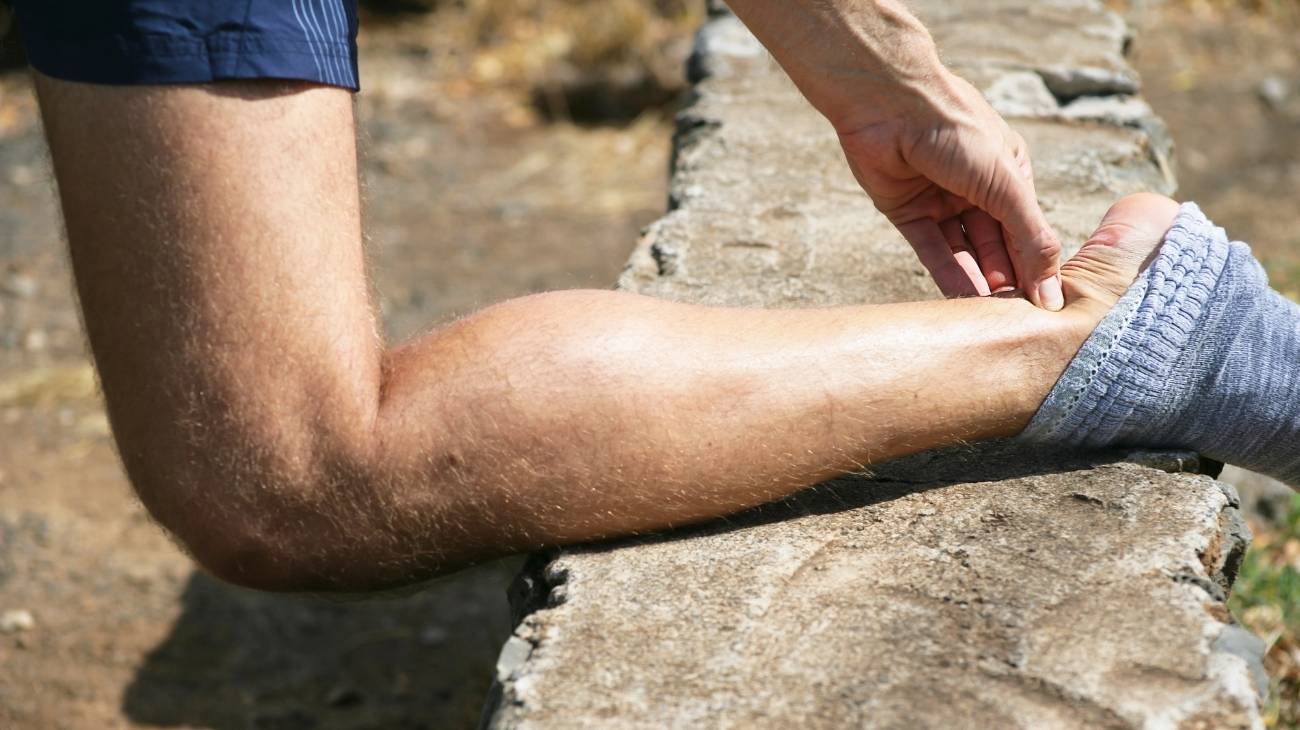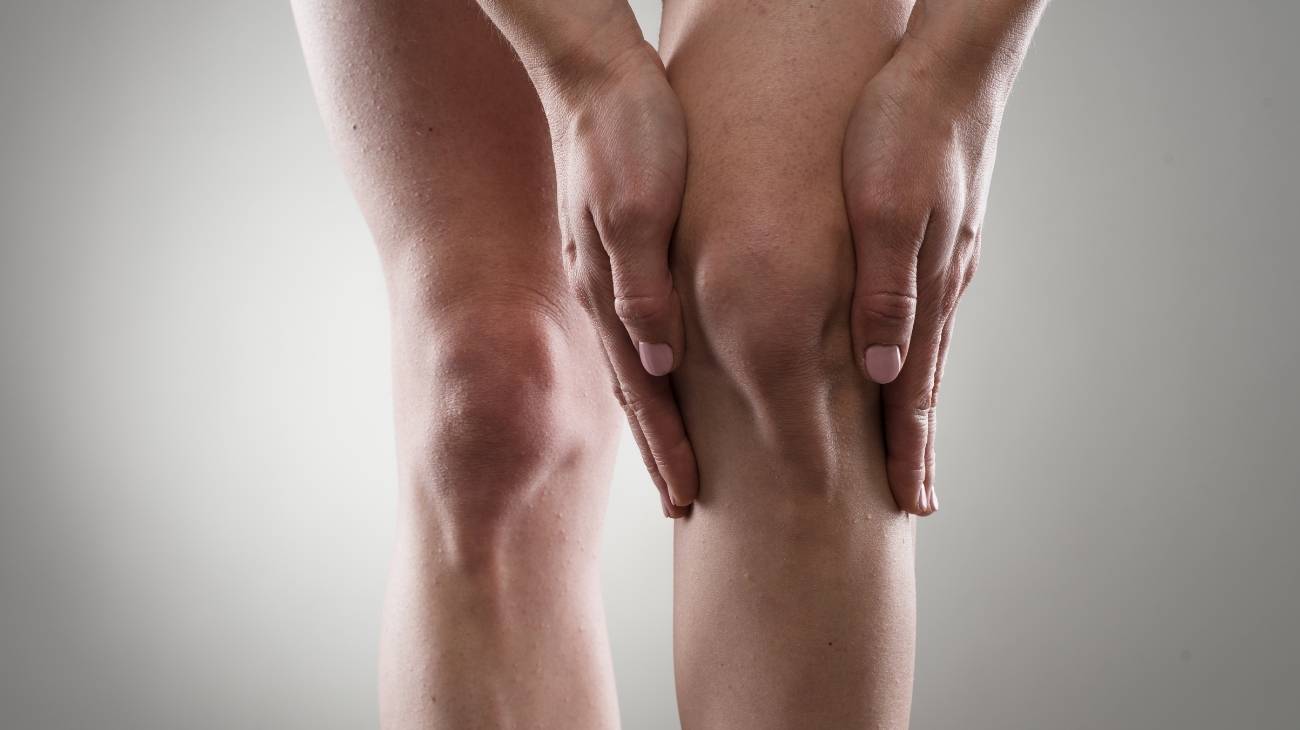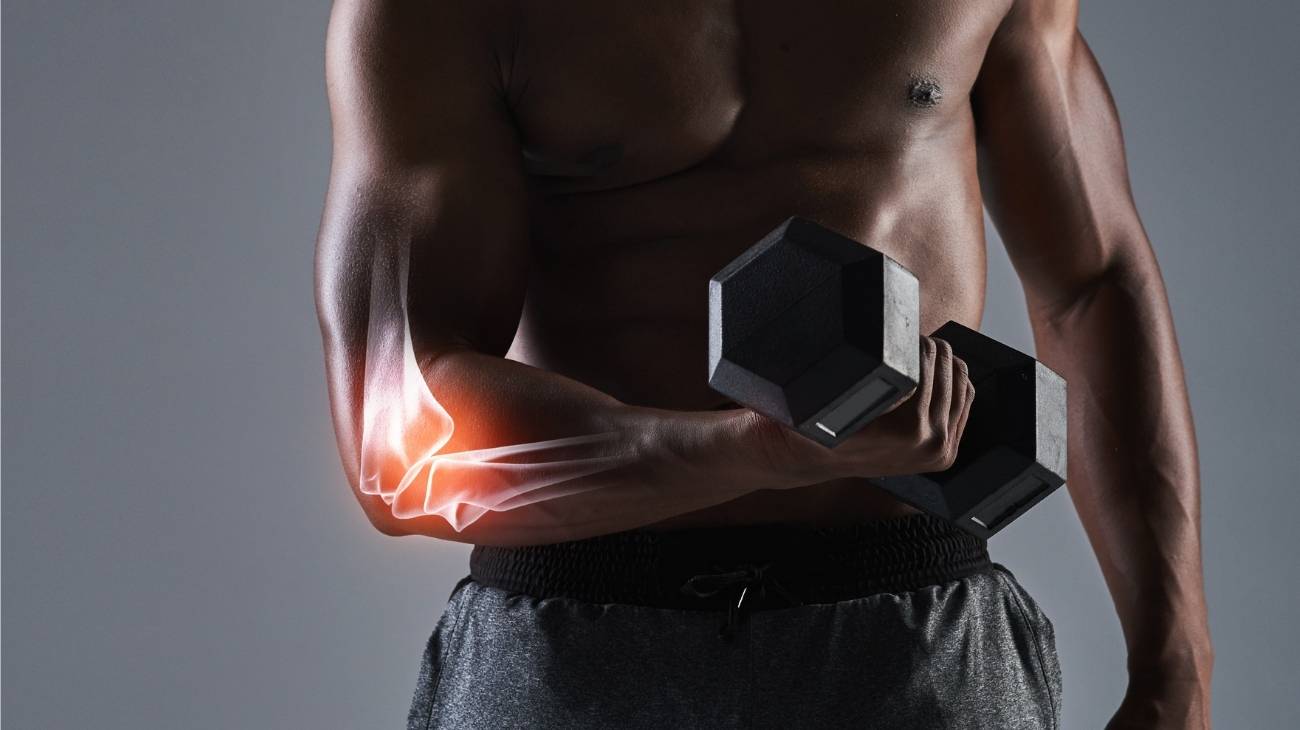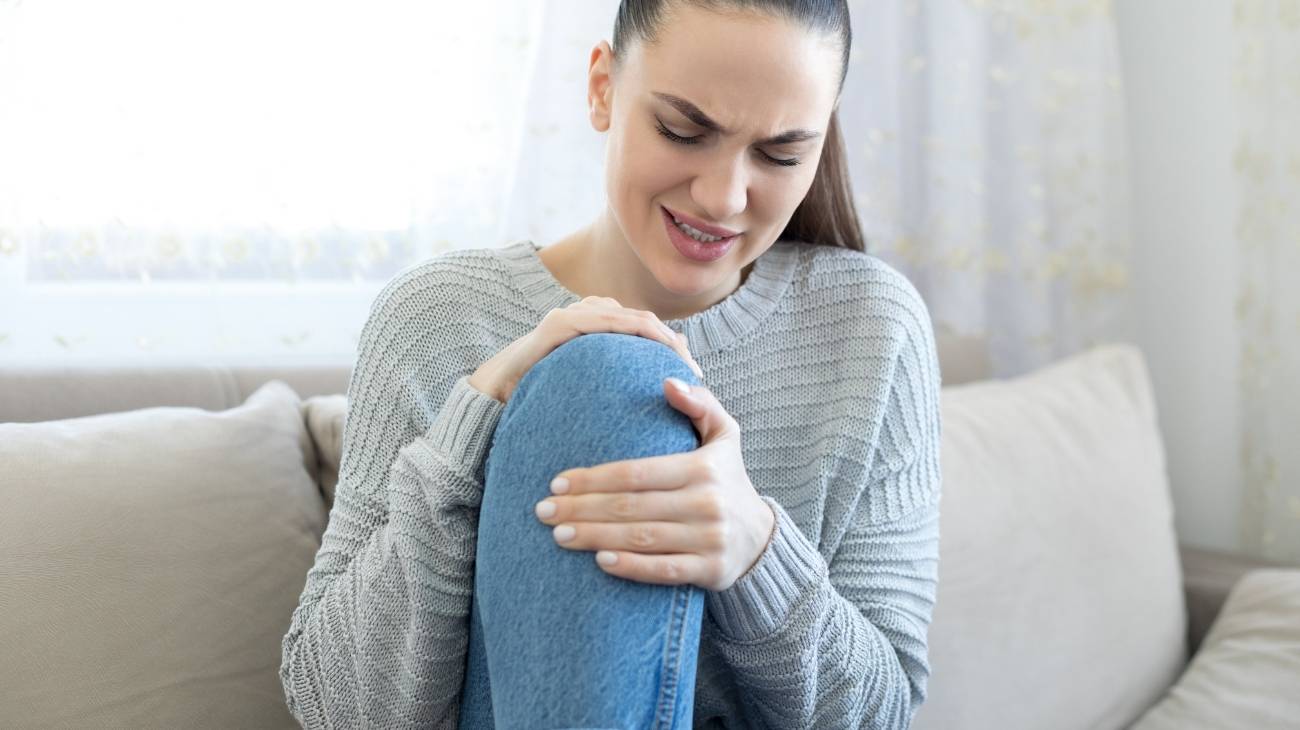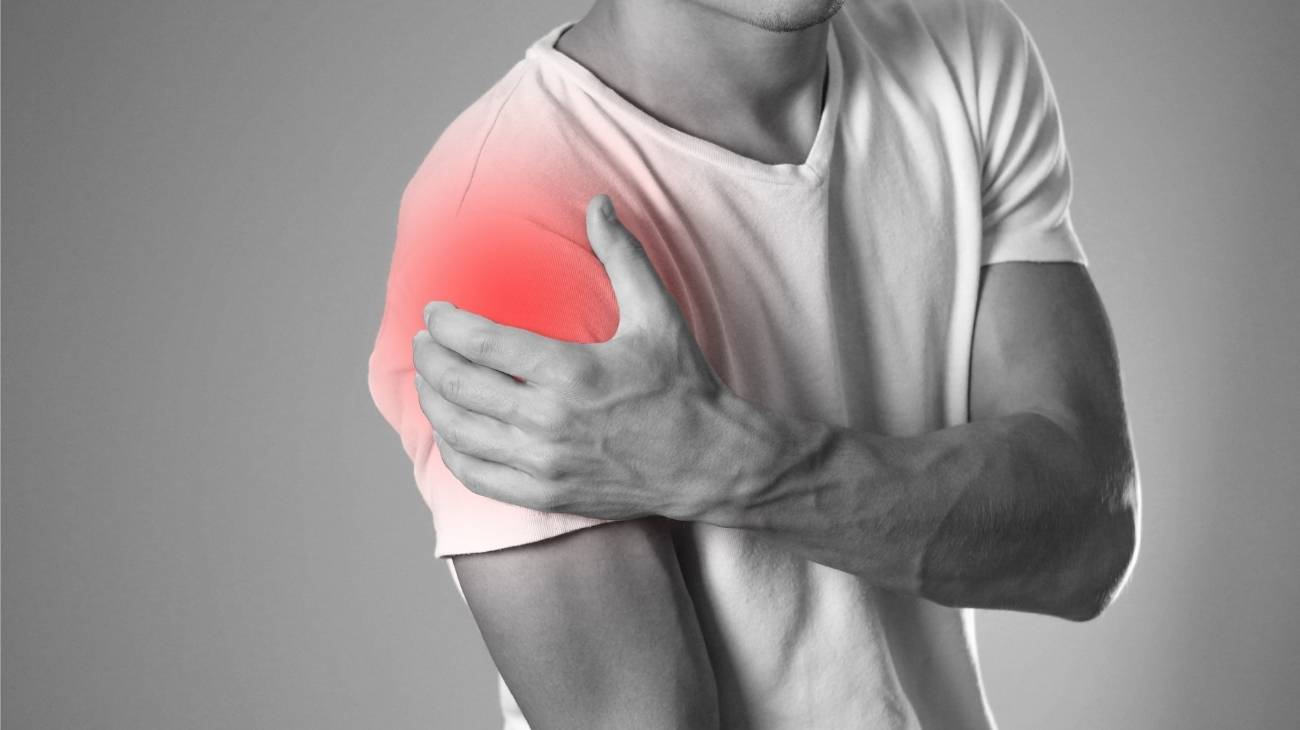Inflammation of the tendons located in the upper portion of the biceps and rotator cuff is called shoulder tendinitis. This injury can be caused by different factors, which we will mention in the following paragraphs.
But that's not all you will find in this post, we will also explain what are the signs and symptoms that will help you notice the presence of ruptures in the tendon fibres of the shoulder. This information will be explained in an easy and detailed way. Finally, you will find a list of tips to help you prevent further tendon injuries.
What is shoulder tendonitis?
This condition is caused by inflammation of the tendons that connect the rotator cuff muscles - infraspinatus, supraspinatus, subscapularis and teres minor - and a portion of the biceps brachii to the respective bones in this area.
This inflammation is caused by micro-tears in the tendon fibres and the lack of proper blood supply to eradicate the chemicals lodged in the joint. These injuries are usually caused by excessive and improper use of the shoulder.
What are the causes and risk factors for shoulder tendonitis?
Here are the factors that increase the chances of shoulder tendon injury:
- Sedentary lifestyle: Lack of activity and exercise means that the shoulder is not used to movement. For this reason, the tendons of the rotator cuff, acromion and biceps become inflamed very easily.
- Blows: Any kind of trauma or injury helps to cause inflammation in the tendon tissues of the shoulder. This can occur not only because of the constant pressure that the fibres have undergone, but also because of the detachment of bone splinters or the rupture of the tendons themselves.
- Demanding jobs and sports: Both athletic and occupational activities where constant demands are placed on the shoulder can lead to tendon injuries. In addition, repetitive movements increase the likelihood of inflammation in the extensor tissues.
- Constant exposure to cold: It should not be forgotten that low temperatures can cause muscle contractures and trigger inflammation in the tendons located in the shoulder. In this way, the tissues tighten and gradually lose movement.
- Calcium deposits: Excessive amounts of calcium can cause tendons to become inflamed due to calcium deposits in the tendon tissues. This tendonitis is common in middle-aged women.
- Impingement: This is the name given to the bottleneck syndrome in which the space between the acromion and the tendons is reduced, leading to the appearance of metabolites and toxic molecules in the tendon fibres.
- Lack of a balanced diet: It is common to find shoulder tendinitis in people who eat red meat rich in fat. It should not be forgotten that fish provides Omega 3, an essential nutrient for the correct functioning of the shoulder joint. In addition, it is necessary to incorporate foods containing potassium and magnesium to improve the tension in the fibres.
Best products for shoulder tendonitis
Bestseller
-
Acupressure Mat and Pillow (Black/Gray)
£44,95 -
Acupressure Mat and Pillow (Green/Navy)
£44,95 -
Acupressure Mat and Pillow (Pink/Bordeaux)
£44,95 -
Acupressure Pillow (Black/Gray)
£21,52 -
Acupressure Pillow (Green/Navy)
£21,52 -
Acupressure Pillow (Pink/Bordeaux)
£21,52 -
Ice Massage Roller Ball (Black)
£34,95 -
Ice Massage Roller Ball (Green)
£34,95 -
Ice Massage Roller Ball (Pink)
£34,95 -
Microwave Wheat Bag for Neck & Shoulder Pain Relief (Hearts)
£21,50 -
Microwave Wheat Bag for Neck & Shoulder Pain Relief (Oxford)
£21,50 -
Microwave Wheat Bag for Neck & Shoulder Pain Relief (Sport)
£21,50 -
Microwave Wheat Bag for Neck Pain Relief (Hearts)
£17,50 -
Microwave Wheat Bag for Neck Pain Relief (Oxford)
£17,50 -
Microwave Wheat Bag for Neck Pain Relief (Sport)
£17,50 -
Microwaveable Wheat Bag for Pain Relief (Hearts)
£17,50 -
Microwaveable Wheat Bag for Pain Relief (Oxford)
£17,50 -
Microwaveable Wheat Bag for Pain Relief (Sport)
£17,50 -
Shoulder Support Brace (Black)
£21,95 -
Shoulder Support Brace (Green)
£21,95 -
Shoulder Support Brace (Pink)
£21,95 -
Trigger Point Massage Stick (Black)
£12,95 -
Trigger Point Massage Stick (Green)
£12,95 -
Trigger Point Massage Stick (Pink)
£12,95
Main symptoms that warn us that we have shoulder tendinitis
There are different symptoms that will appear in your body if you suffer from shoulder tendinitis. For this reason, it is important that you know what they are:
- Weakness: Loss of strength in the arm may be caused by shoulder tendonitis. This is due to inflammation of the tendons in this part of the body, causing the muscles to become unresponsive to stimuli.
- Pain: A characteristic symptom of this disease is the pain that the patient feels when performing different activities. For example, rotating the arm in different positions, lifting objects or hanging from a bar. This symptom is increased by touch and after a night's rest.
- Loss of movement: Muscle stiffness is a characteristic symptom that occurs in patients with shoulder tendonitis. This is due to the limited opening of the joints to do their work.
- Inflammation: The accumulation of blood in this part of the body causes the affected area to swell. In some cases it is possible to find redness and a high temperature in the area.
- Popping noises: Popping noises may also be present in patients with shoulder tendonitis. These are caused by tendons rupturing or foreign bodies entering the joint.
What treatments are available to improve and cure shoulder tendonitis?
The symptoms caused by shoulder tendinitis can be reduced by means of different treatments that are applied nowadays.
We will show you below which are the most commonly used:
Alternative and complementary therapies
The ancillary treatments used to improve and cure shoulder tendonitis are:
- Hot and cold therapy: By means of hot and cold water bags, ice or the application of cloths with both temperatures on the affected area, it is possible to reduce inflammation and pain in the shoulder. This is due to the properties of both temperatures, which can lead to increased blood flow and stimulation of analgesic agents produced by the body itself to reduce the swelling of the tendons.
- Compression therapy: Shoulder tendinitis can be treated with therapies that include special compression bandages or shoulder braces that immobilise the affected area. This aims to help the joint function properly so that the muscles and tendons do not put pressure on the bursae, thus preventing severe pain and poor performance. In this way, the tendon fibres are brought back to their natural state in a shorter time.
- Massage therapy: One of the most commonly used therapies for shoulder tendinitis is friction massage. With this method it is possible to stimulate blood flow in this part of the body so that the tendons of the biceps, rotator cuff and acromion can exchange fluid and nutrients with the blood. This will help to reduce inflammation in the area, which will improve the patient's sense of well-being. This therapy can be used in conjunction with heating elements to cause further dilation of the vessels in the capillary walls.
- Acupressure therapy: Symptoms of tendon injuries in the shoulder can be reduced by this oriental technique. Manual pressure is applied to precise locations on the patient's body, where nerves are focused to benefit the stimulation of blood circulation in the affected area. This improves the exchange of oxygen and nutrients between the blood and tendon fibres, eliminating the waste molecules that cause inflammation and pain.
- Thermotherapy: This is another of the most commonly used treatments to reduce the effects of shoulder tendonitis. This is due to the properties that heat offers to dilate the capillary vessels that exist in the tendon fibres. What is achieved with this therapy is a decrease in inflammation and pain due to the proper circulation of blood to exchange gases and fluids with the soft tissues. Heat can be applied by means of hot water bottles and special gels to be rubbed on the affected area.
- Natural remedies using plants: It is possible to stimulate circulation, relieve pain and reduce swelling in the shoulder by using medicinal plants. This can be done, always with the doctor's approval to avoid future injuries, by means of infusions or direct application to the area. It should be borne in mind that temperature is an important factor that improves the dilatation of the vessels, so the water - in the case of external therapy - should be between 37 and 40 degrees Celsius. The soothing effects of linden, lavender and chamomile are combined with tissue-toning varieties such as ginger, thyme and mustard.
- Healthy lifestyle habits: Many cases of shoulder tendinitis arise because the patient is not aware of the correct posture for daily activities or the importance of exercising without overexposing the muscle-tendon structure. For this reason, this therapeutic approach involves the injured person in learning more about the functioning of the affected joint, thus generating discernment about what things help prevent the onset of shoulder inflammation. In this way the disease can go into remission much faster and future injuries can be avoided.
Dietary supplements
Natural supplements help to improve the condition of the tendons by causing the regeneration of fibres that may be affected. Therefore, to reduce the symptomatology of shoulder tendonitis, micronutrients can be implemented in the form of tablets, powders and syrups. These should be prescribed by the doctor to avoid gastric, hepatic and other consequences for the patient.
Within these supplements it is possible to find frequently:
- Glucosamine.
- hyaluronic acid.
- Magnesium.
- Potassium.
- Sodium.
Physiotherapy treatments
Shoulder tendinitis can be treated by means of rehabilitation techniques that must be carried out by a physiotherapist. This type of treatment aims to improve the joint in order to strengthen the whole area and thus decompress the pressure on the bursae, muscles and tendons.
Different methods can be used, but the most commonly used are repetitive exercises, radiofrequency wave therapy, electrical pulse treatments, dry needling and hydrotherapy.
Medications
The most important thing to note in this type of therapy is that medication must be guided and prescribed by the acting physician. It follows that self-medication should not be practised at any time due to the increased likelihood of internal bleeding, intestinal problems and liver complications, among other things.
Opioid analgesics, to reduce pain, and NSAIDs, which are non-steroidal anti-inflammatory drugs that help reduce swelling in the affected area, are used. In some cases it is possible to find treatments with cortisone injectables.
Surgeries
The pathology of advanced shoulder tendonitis requires surgery to restore movement and function of the tendons in the affected area.
This therapy consists of restoring the tissue by inserting fibres into the tendons, although it is also possible to find surgeries that aim to remove the foreign elements that originated in this part of the body and that produce the inflammation.
Prevention for shoulder tendon inflammation
Below, you will find a list of preventive methods to help you avoid the onset of shoulder tendonitis:
- Do not lift heavy objects: Poor strength can cause not only muscle strain but also inflammation in the tendons located in the shoulder. For this reason it is advisable to avoid this type of activity or to resort to the use of elements that do the strength for you.
- Warm up the shoulder: Before doing a work activity or practising a sport in which this joint needs to be overworked, it is advisable to do exercises that predispose the tendons to the action. This will help prevent inflammation in the muscles and tendon fibres.
- Don't perform sudden actions: Sudden movements can lead to injuries to the extensor tendons in the shoulder.
- Strengthen your shoulder muscles: Performing specific exercises to strengthen this area of the body will help you avoid injury and relapse of past injuries.
- Avoid being overweight and sedentary: People with excess body weight and those who are not physically active on a daily basis are more prone to shoulder tendon fibre injuries.
- Always maintain correct posture: Improving proprioception is a good idea to avoid shoulder tendon injuries. It is therefore a good idea to know which postures are suitable for each type of activity you do on a daily basis.
References
- Lewis, J. S. (2009). Rotator cuff tendinopathy. British journal of sports medicine, 43(4), 236-241. https://bjsm.bmj.com/content/43/4/236.short
- Seitz, A. L., McClure, P. W., Finucane, S., Boardman III, N. D., & Michener, L. A. (2011). Mechanisms of rotator cuff tendinopathy: intrinsic, extrinsic, or both?. Clinical biomechanics, 26(1), 1-12. https://www.sciencedirect.com/science/article/abs/pii/S0268003310002214
- Littlewood, C., Ashton, J., Chance-Larsen, K., May, S., & Sturrock, B. (2012). Exercise for rotator cuff tendinopathy: a systematic review. Physiotherapy, 98(2), 101-109. https://www.sciencedirect.com/science/article/abs/pii/S0031940611004536
- Littlewood, C., May, S., & Walters, S. (2013). Epidemiology of rotator cuff tendinopathy: a systematic review. Shoulder & Elbow, 5(4), 256-265. https://journals.sagepub.com/doi/abs/10.1111/sae.12028
- Littlewood, C., Malliaras, P., & Chance-Larsen, K. (2015). Therapeutic exercise for rotator cuff tendinopathy: a systematic review of contextual factors and prescription parameters. International Journal of Rehabilitation Research, 38(2), 95-106. https://www.ingentaconnect.com/content/wk/ijrre/2015/00000038/00000002/art00001
- Almekinders, L. C., & Temple, J. D. (1998). Etiology, diagnosis, and treatment of tendonitis: an analysis of the literature. Medicine and science in sports and exercise, 30(8), 1183-1190. https://europepmc.org/article/med/9710855
- Kainberger, F. M., Engel, A., Barton, P., Huebsch, P., Neuhold, A., & Salomonowitz, E. (1990). Injury of the Achilles tendon: diagnosis with sonography. AJR. American journal of roentgenology, 155(5), 1031-1036. https://radnuk.meduniwien.ac.at/fileadmin/radiodiagnostik/pdf/1_Kainberer_et_al_1990.pdf
- Sandmeier, R., & Renström, P. A. F. H. (1997). Diagnosis and treatment of chronic tendon disorders in sports. Scandinavian journal of medicine & science in sports, 7(2), 96-106. https://onlinelibrary.wiley.com/doi/abs/10.1111/j.1600-0838.1997.tb00125.x
- Alfredson, H., & Lorentzon, R. (2002). Chronic tendon pain: no signs of chemical inflammation but high concentrations of the neurotransmitter glutamate. Implications for treatment?. Current drug targets, 3(1), 43-54. https://www.ingentaconnect.com/content/ben/cdt/2002/00000003/00000001/art00004
- Williams, J. G. P. (1986). Achilles tendon lesions in sport. Sports Medicine, 3, 114-135. https://link.springer.com/article/10.2165/00007256-198603020-00003






































